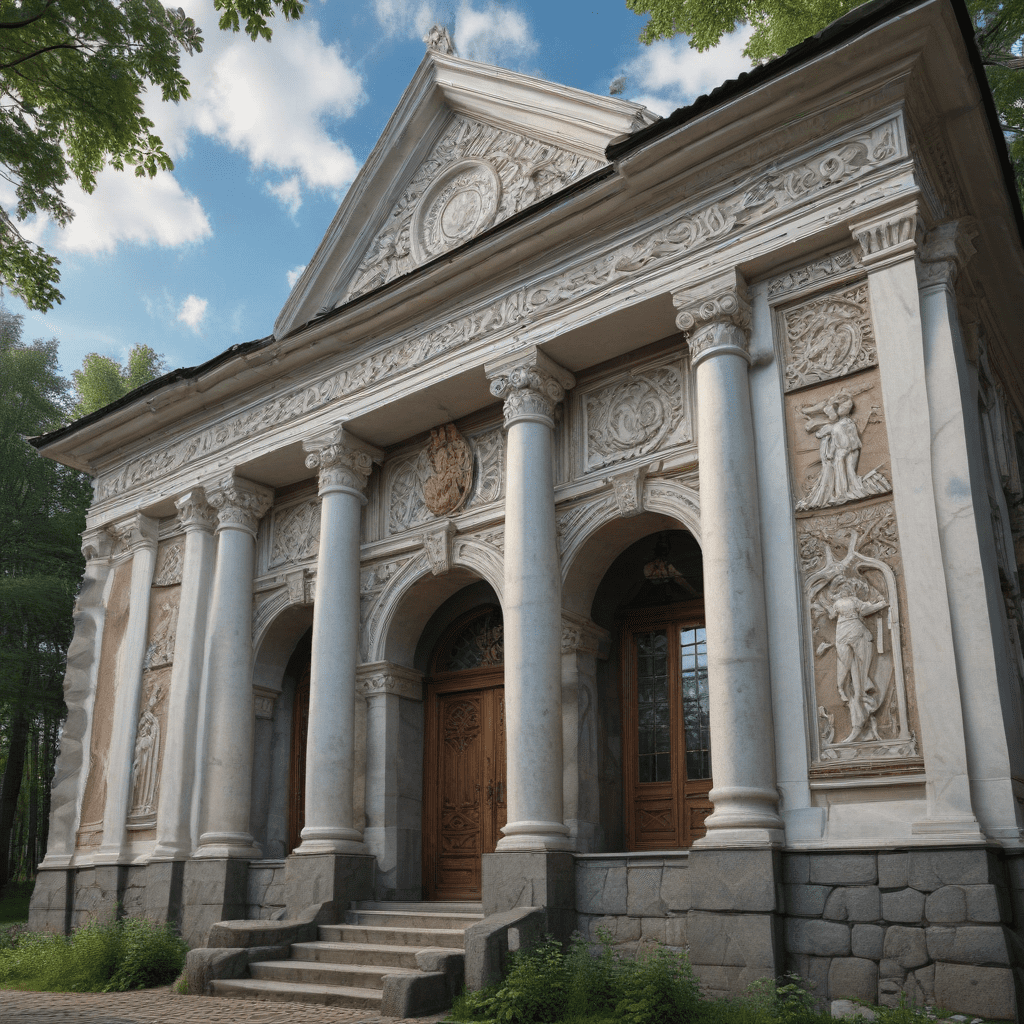1. Introduction
Finnish mythology, steeped in ancient folklore and animistic beliefs, has left an enduring imprint on the traditional architecture of Finland. This article delves into the profound influence of Finnish mythology, exploring how mythical concepts, characters, and narratives have shaped the design and symbolism of Finnish dwellings and structures.
2. Historical Context: Origins of Finnish Mythology
The roots of Finnish mythology lie in the pre-Christian beliefs of the Finno-Ugric peoples. These beliefs centered around nature worship, animism, and the interconnectedness of all living things. As Finnish society evolved, these beliefs were passed down through oral tradition, eventually being codified in the epic poem known as the Kalevala.
3. Key Mythological Concepts: Luonnotar and Väinämöinen
Among the central figures of Finnish mythology are Luonnotar, the primordial mother goddess, and Väinämöinen, the eternal sage and creator of the world. Luonnotar represents the raw, untamed forces of nature, while Väinämöinen embodies wisdom, knowledge, and the transformative power of music. These deities and their associated concepts have deeply influenced the symbolism and design of Finnish structures.
4. Architectural Symbolism of the Natural World
Nature holds a central place in Finnish mythology, and this is reflected in the traditional architecture of Finland. Houses and other structures are often designed to blend seamlessly into the surrounding landscape, respecting the sanctity of the natural environment. The use of natural materials, such as wood and stone, further reinforces this connection to nature.
5. Dwelling Designs Inspired by Mythological Imagery
The influence of Finnish mythology extends beyond mere symbolism. Many traditional dwelling designs are directly inspired by mythological imagery. For example, the traditional Finnish sauna, with its smoke-filled interior and association with purification and renewal, reflects the mythological cleansing rituals of ancient Finnish beliefs.
6. Saunas as Ritualistic Spaces
Saunas hold a profound significance in Finnish culture, rooted deeply in mythological traditions. Traditionally constructed from wood and heated with hot stones, saunas were believed to be places of purification and renewal. The intense heat and steam were seen as a way to cleanse both the body and the spirit, akin to the mythological cleansing rituals performed by ancient Finnish deities.
7. Architectural Patterns and Motifs: Influence of the Kalevala
The Kalevala, the national epic of Finland, has played a pivotal role in shaping the architectural patterns and motifs of Finnish traditional architecture. The epic's vivid descriptions of mythical creatures, landscapes, and events have inspired intricate carvings, paintings, and decorative elements adorning many Finnish structures. These artistic representations serve as a testament to the enduring influence of Finnish mythology in contemporary times.
8. Cultural Preservation through Vernacular Architecture
Vernacular architecture, the traditional building practices rooted in local culture and materials, has acted as a repository for Finnish mythology. Through the construction of dwellings and other structures, Finnish communities have preserved and passed down mythological symbols, beliefs, and narratives from generation to generation. Vernacular architecture thus becomes a tangible expression of the collective cultural memory and a vital means of safeguarding Finland's rich mythological heritage.
9. Contemporary Interpretations of Mythological Influences
In contemporary Finnish architecture, mythological influences continue to manifest in innovative and dynamic ways. Architects and designers draw inspiration from mythological motifs, materials, and concepts to create modern interpretations of traditional Finnish architecture. These modern structures honor the past while embracing the present, showcasing the enduring influence of Finnish mythology in shaping the country's architectural landscape.
10. Conclusion: The Enduring Legacy of Finnish Mythology
Finnish mythology has left an indelible mark on the traditional architecture of Finland. From the symbolism of nature to the inspiration behind specific design elements, mythological concepts have deeply permeated the built environment. Vernacular architecture, contemporary interpretations, and the continued reverence for mythological traditions all contribute to the enduring legacy of Finnish mythology in the architectural landscape of the country.
Frequently Asked Questions (FAQs)
Q: How has Finnish mythology influenced the design of saunas?
A: Saunas, a central part of Finnish culture, are steeped in mythological traditions. They are seen as places of purification and renewal, reflecting mythological cleansing rituals performed by ancient Finnish deities.
Q: In what ways does the Kalevala impact Finnish architecture?
A: The Kalevala, Finland's national epic, has had a profound influence on architectural patterns and motifs. Its depictions of mythical creatures, landscapes, and events have inspired intricate carvings, paintings, and decorative elements in Finnish structures.
Q: How does vernacular architecture preserve Finnish mythology?
A: Vernacular architecture, the traditional building practices of Finnish communities, has preserved mythological symbols, beliefs, and narratives. Through the construction of dwellings and other structures, mythological influences have been passed down from generation to generation, ensuring the continuity of Finland's mythological heritage.



